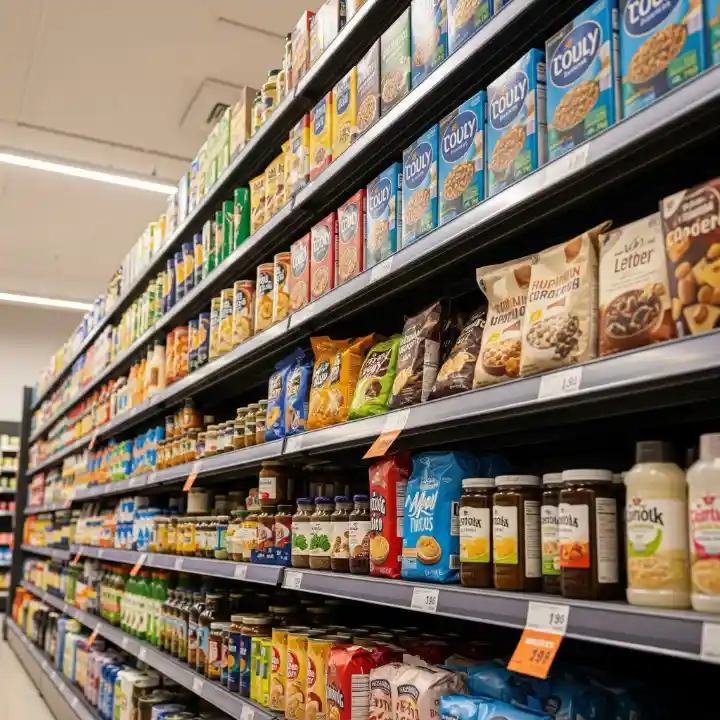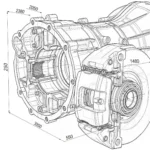Let me take you back to the first time I set foot in a Mercadona store in Madrid. It was just after a long day of travel, and I’d forgotten all my essentials. As a finance professional, I’m a bit of a stickler for efficiency and value. The checkout was fast, the staff knew their regulars, and the store layout felt almost frictionless. That experience sparked a question; what makes “mercadona” so much more than a neighborhood supermarket?
What follows isn’t just a story of food aisles and checkouts. It’s a breakdown, why mercadona continues to thrive in a fiercely competitive market, and what lessons business leaders and investors can steal from its playbook.
Why Mercadona Matters: Beyond the Grocery Cart
Mercadona, founded in 1977, is Spain’s largest supermarket chain by both revenue and market share with 1,674 stores across Spain and Portugal and sales topping €38.8 billion in 2024, up 9% on the year prior. This family-owned retailer now covers 28.2% of all Spanish grocery transactions, tripling its closest competitor, Carrefour.
But numbers alone aren’t the secret. The core difference is Mercadona’s “Total Quality Model,” which puts the customer (“The Boss”) at the very center of every decision from product selection to store layout to staff incentives. They’ve managed to grow even during economic bumps, creating 6,000 jobs last year and now employing over 110,000 people in the process.
Mercadona’s model is like a perfectly balanced equation, aligning customers’ needs, suppliers’ expertise, and staff motivation with razor-sharp discipline on prices and efficiency.
Mercadona’s Unique Formula: Keys to Retail Domination
Customer-First Thinking and Private Label Leadership
-
Mercadona’s focus isn’t just on selling goods, but on being the most trusted local partner for food, home, and hygiene needs.
-
Their house brands (Hacendado, Deliplus, Bosque Verde) consistently rank as the #1 value option for Spanish households often priced 40% below competitors.
-
Remarkably, Mercadona avoids big ad campaigns, letting customer satisfaction and word of mouth drive loyalty and growth.
-
The company’s well-targeted range (less product clutter, more best-sellers per shelf) leads to faster turnover and less waste.
Hyper-Efficient Supply Chain and Automation
-
Mercadona’s logistics are among Europe’s best. Their deep partnership with a select group of long-term suppliers cuts out intermediaries, locking in stable prices and top quality.
-
Automated distribution centers (like San Isidro) deliver fresh produce from field to shelf within 24 hours using robotics to minimize delays, improve accuracy, and keep costs low.
-
Every automation upgrade not only speeds up the process but also creates safer, less physically demanding jobs for employees.
Local, Loyal, and Sustainable
-
More than 90% of fresh produce comes from local sources, building deep ties to Spain’s agricultural sector and supporting local suppliers.
-
Mercadona reinvests heavily in sustainability, reducing carbon emissions by 20% over five years and running strong recycling and food waste programs.
-
In 2024 alone, Mercadona paid €3 billion in taxes and launched aid programs to support 4,600 small businesses affected by natural disasters.
Digital, But Human-Centric
-
While some grocers chase pure e-commerce, Mercadona remains rooted in physical stores, refining digital tools to complement not replace personal service.
-
Online sales hit €840 million in 2024, making up just 2% of revenue, but growing fast thanks to targeted home delivery and a user-friendly digital platform.
-
Data-driven stock management, checkout analytics, and dynamic recommendation engines boost both satisfaction and conversion rates.
Practical Insights: What Executives Can Learn from Mercadona
-
Align stakeholder incentives: Your best plans work only if customers, staff, and suppliers share your vision and rewards. Mercadona’s “Total Quality Model” links them all.
-
Control your brand: Own-brand products let you set your own quality, pricing, and profit margins. Mercadona’s house labels now drive much of its financial resilience.
-
Think local, act global: Sourcing locally isn’t just good PR done at scale, it’s a cost-cutter, a freshness guarantee, and an insurance policy against global shocks.
-
Automate with intent: Automation isn’t just about robots. Mercadona’s modular systems cut errors and standardize excellence, think of them as the retail world’s version of a resilient supply chain.
-
Invest in people: Happy, stable staff drive service excellence. Mercadona’s full-time contracts and employee training yield lower turnover and higher productivity.
-
Plan for disruption: Mercadona’s ability to pivot (as seen during Spain’s 2024 floods and pandemic surges) reveals the value of robust crisis response and fast-paced innovation.
Navigating Mistakes: Avoiding Common Retail Pitfalls
Mercadona’s success isn’t about getting everything right the first time. Here are a few stumbles and how they respond:
-
Over-expansion risk: The company closed or consolidated 49 stores in 2024 while opening 42 new ones keeping focus sharp and resources invested where returns are strongest.
-
Predicting demand: Employing analytics and regular customer feedback (including ‘co-innovation’ labs), Mercadona rapidly iterates on product range and service tweaks.
-
Public scrutiny: In the face of price criticism or labor tensions, swift communication and transparent reporting keep trust with both shoppers and regulators.
The Mercadona Table: 2024-2025 at a Glance
| Metric | 2024 Value | 2025 Target/Trend |
|---|---|---|
| Sales Revenue | €38.8 billion | +3.5% forecast |
| Net Profit | €1.38 billion | Maintain/Consolidate |
| Market Share (Spain) | 28.2% | Growing |
| Stores | 1,674 | +New openings |
| Employees | 110,000 | +1,000 jobs in 2025 |
| Online Sales | €840 million | Growing (+20% YoY) |
| Private Label Share | >60% | Stable/Expanding |
| Fresh Produce Local Sourced | >90% | Committed |
Closing Thoughts: Mercadona’s Evolving Lesson
Mercadona stands as a case study for any leader balancing scale, community roots, and relentless efficiency. The brand’s hug-your-customer model is hardly flashy, but consistently beats bigger, flashier rivals. That’s not luck, it’s discipline, data, and a bottom-up respect for the real “boss”: the shopper.
If you’re searching for next-level strategies in supply chain, branding, or retail automation, borrow a page from Mercadona’s manual. And if your business just needs renewed resilience, remember: sometimes, the best innovation is getting closer to your people and your product.
How has your company learned from retail disruptors like mercadona?
Share your experience in the comments, or connect with a trusted advisor for a deep dive on operational excellence and customer loyalty.





